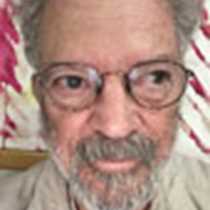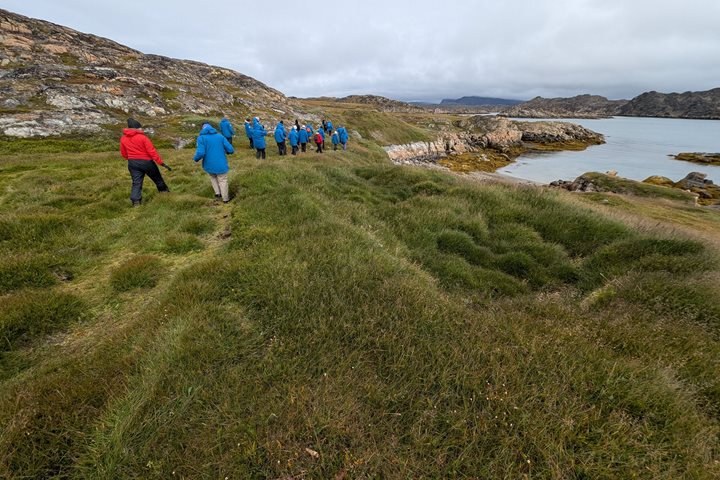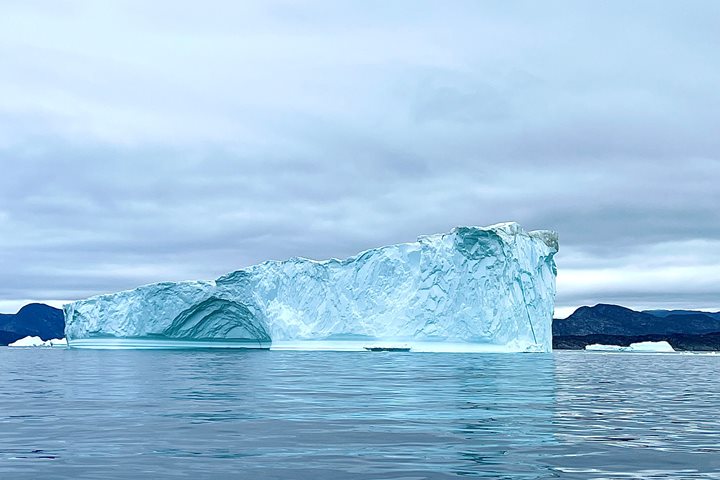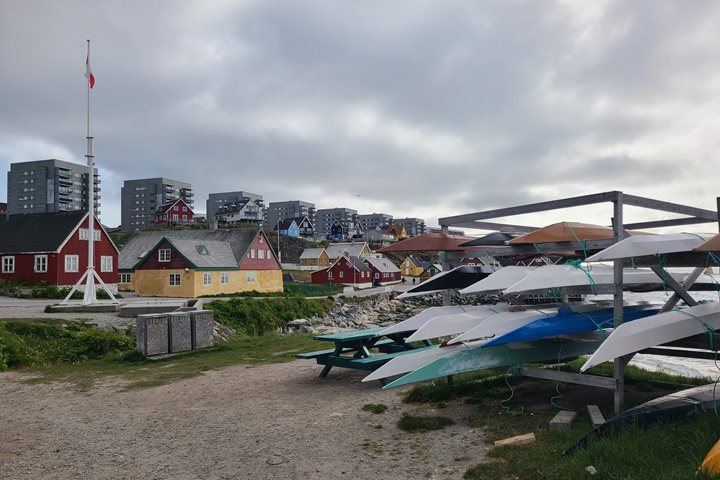This morning, we are anchored in front of the first Norse farm in Greenland, Erik the Red’s farm, Brattahlíð. The morning starts out bright and surprisingly warm. It only becomes warmer as the morning progresses, and we remove as many layers of clothing as possible! Along the shore, we are faced with an impressive expanse of lush grassland. This is not natural. The meadows are a result of human effort and sheep diligence; humans remove the woody vegetation, and the sheep keep it from coming back. Today, there is a small farming community at the site, Qassiarsuk.
We make a Zodiac landing next to the mouth of a small stream. Arctic char live in the stream, perhaps preparing to spawn. There are a couple of houses between us and our first destination, and the folks here are friendly. I am sure the people are accustomed to visitors. After all, this is one of the most important Norse sites in Greenland, the farm of the founder of the Greenland colony.
Our first destination is a short hike up a small hill. Here are two buildings, replicas of a Norse Long House and a chapel. The ruins of both original buildings are located nearby. The chapel is known as Tjoldhilde's Church. Tjoldhilde was Erik the Red’s wife. She was Christian, Erik was not. It is said that Tjoldhilde had the ‘church’ built some distance from the main farm residence so as to not antagonize Erik. The ‘church’ is very small, a family chapel really, with space for only a handful of people. Around the chapel would be consecrated ground where people would be buried. We are lucky with our timing. An official UNESCO guide is in attendance, and he is more than happy to answer all our questions and more. He knows the area and its history, as this is where he grew up. We, too, have our own expert on the history of Norse Greenland, Hafsteinn Saemundsson of Iceland. Hafsteinn stations himself near some ruins, situated below the hill upon which the replicas are built.
Next to the chapel is a replica of a Long House. From the outside, the turf walls and roof make the building look like a small hill. On the inside, the house is surprisingly spacious. Displays of period clothing help us envision the people who lived here for close to 500 years, until their world got too cold, and they disappeared like a dream after waking. Well, a dream to me, but the end must have been sad. The people were cut off from the rest of the world, running out of food after slaughtering all their animals, perhaps fighting each other. Who knows? We have time to think about it or not as we wander the hills, learn about the ruins, and visit the large statue of Leif Erikson, son of Erik the Red.
Photo caption and photographer: Tjoldhilde's Church. Photo by Dennis Cornejo







